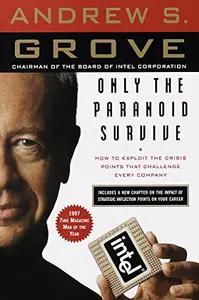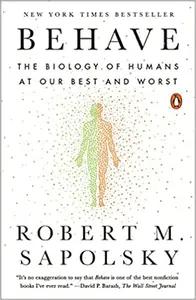Team Topologies: Organizing Business and Technology Teams for Fast Flow
By Matthew Skelton
Category
BusinessRecommended by
"Team Topologies" by Matthew Skelton provides a comprehensive guide to designing and evolving modern organizational structures for software and digital product development teams. Skelton, along with co-author Manuel Pais, presents a unique framework that helps teams optimize their organizational structures to foster effective collaboration, speed, and innovation.
The book begins by highlighting the challenges faced by traditional organizational models in the fast-paced, technology-driven world. Skelton emphasizes the need for adaptable and autonomous teams to drive productivity and deliver customer value. He introduces the four fundamental team types - Stream-aligned Teams, Enabling Teams, Complicated-Subsystem Teams, and Platform Teams - each serving a specialized purpose within the organization.
By understanding the capabilities and responsibilities of each team type, readers learn how to design and implement effective team topologies. The authors delve into a range of topics, including team cognitive load, Conway's Law, and team interaction modes, providing essential insights for aligning teams with their specific objectives.
One of the key takeaways from this book is the importance of managing team dependencies. Skelton and Pais provide practical advice on recognizing and addressing dependencies, including how to reduce organizational friction and streamline communication channels. They also emphasize the significance of leadership and offer insights into effective ways to support and nurture autonomous teams.
Furthermore, the book covers various case studies and real-world examples that showcase successful team topologies in action. These examples offer inspiration for readers to apply the concepts and methods discussed in their own organizations, allowing for quicker, more efficient adaptations and implementations.
"Team Topologies" is a valuable resource for leaders, managers, and team members who seek to optimize their organizations for high-performance software and product delivery. The practical advice, comprehensive framework, and real-world examples presented in this book will enable readers to transform their organizational structures and create a culture of continuous innovation and collaboration.
The book begins by highlighting the challenges faced by traditional organizational models in the fast-paced, technology-driven world. Skelton emphasizes the need for adaptable and autonomous teams to drive productivity and deliver customer value. He introduces the four fundamental team types - Stream-aligned Teams, Enabling Teams, Complicated-Subsystem Teams, and Platform Teams - each serving a specialized purpose within the organization.
By understanding the capabilities and responsibilities of each team type, readers learn how to design and implement effective team topologies. The authors delve into a range of topics, including team cognitive load, Conway's Law, and team interaction modes, providing essential insights for aligning teams with their specific objectives.
One of the key takeaways from this book is the importance of managing team dependencies. Skelton and Pais provide practical advice on recognizing and addressing dependencies, including how to reduce organizational friction and streamline communication channels. They also emphasize the significance of leadership and offer insights into effective ways to support and nurture autonomous teams.
Furthermore, the book covers various case studies and real-world examples that showcase successful team topologies in action. These examples offer inspiration for readers to apply the concepts and methods discussed in their own organizations, allowing for quicker, more efficient adaptations and implementations.
"Team Topologies" is a valuable resource for leaders, managers, and team members who seek to optimize their organizations for high-performance software and product delivery. The practical advice, comprehensive framework, and real-world examples presented in this book will enable readers to transform their organizational structures and create a culture of continuous innovation and collaboration.
Share This Book 📚
More Books in Business

High Output Management
Andrew Grove

Principles
Ray Dalio

Shoe Dog
Phil Knight

Originals
Adam Grant

Rework
Jason Fried

The Ride of a Lifetime
Bob Iger

7 Powers
Hamilton Helmer

Good To Great
Jim Collins

Hopping Over The Rabbit Hole
Anthony Scaramucci

Only the Paranoid Survive
Andy Grove

The Outsiders
William Thorndike

Creativity, Inc.
Ed Catmull

Crossing the Chasm
Geoffrey Moore

Bad Blood
John Carreyrou

Loonshots
Safi Bahcall

Measure What Matters
John Doerr

Range
David Epstein

The Great CEO Within
Matt Mochary

The Power of Habit
Charles Duhigg

The Third Wave
Steve Case

Built To Last
Jim Collins

Getting to Yes
Roger Fisher

Lean In
Sheryl Sandberg

Made to Stick
Chip Heath

Negotiating The Impossible
Deepak Malhotra

No Rules Rules
Reed Hastings

Sam Walton
Sam Walton

Steve Jobs
Walter Isaacson

Talent
Tyler Cowen & Daniel Gross

The Fish That Ate The Whale
Rich Cohen
Popular Books Recommended by Great Minds 📚

Behind the Cloud
Marc Benioff

Why We Sleep
Matthew Walker

Principles
Ray Dalio

7 Powers
Hamilton Helmer

High Output Management
Andrew Grove

The Third Wave
Steve Case

Principles for Dealing With The Changing World Order
Ray Dalio

Wanting
Luke Burgis

Skin In The Game
Nassim Taleb

The Internet of Money Volume 1
Andreas Antonopolous

How to Change Your Mind
Michael Pollan

The Intelligent Investor
Benjamin Graham

The Holy Bible
Various

Behave
Robert Sapolsky

The Undoing Project
Michael Lewis

Can't Hurt Me
David Goggins

The Coddling of the American Mind
Greg Lukianoff & Jonathan Haidt

Loonshots
Safi Bahcall

Influence
Robert Cialdini

Homo Deus
Yuval Noah Harari

Billion Dollar Whale
Tom Wright

Dune
Frank Herbert

The Ascent of Money
Niall Ferguson

High Growth Handbook
Elad Gil

The Outsiders
William Thorndike

The Ride of a Lifetime
Bob Iger

The Score Takes Care of Itself
Bill Walsh

The Lean Startup
Eric Reis

The Moment of Lift
Melinda Gates

The True Believer
Eric Hoffer
